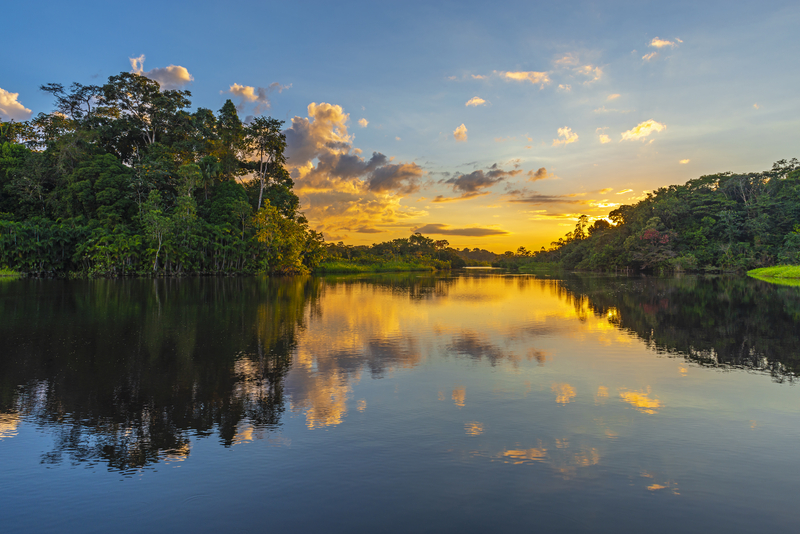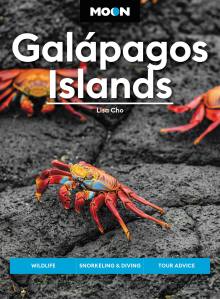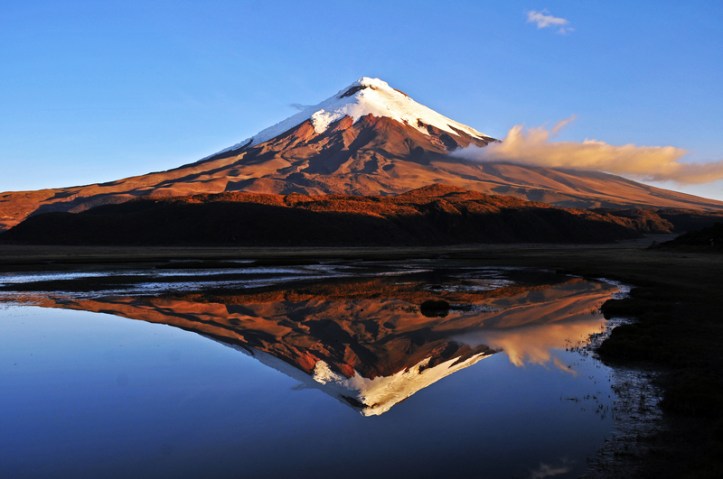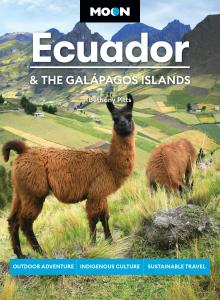Ecuador’s Top Five Wildlife Wonders
Ecuador is about the same size as Colorado, but its terrain varies from pacific beaches to 5000-meter-high peaks and tropical rainforest. Such diversity contains an astonishing array of creatures, including some 1676 species of birds, more than in all North America. Below are the top five destinations for wildlife watching.
The Amazon Jungle

No visit to South America is complete without a trip to the Amazon jungle, where time seems to have stood still. The wildlife ranges from playful pink dolphins and parakeets and to less-than-playful alligators and anacondas. Bird-watching at the top of the 50-meter-high forest canopy, and adrenaline-pumping night walks to tarantula holes are but a few of the highlights. The jewel in the crown is Yasuní, the country’s largest mainland national park. Untouched by the last Ice Age, this park is one of the world’s most biodiverse areas with 500 species of birds, 130 species of amphibians, and 100,000 species of insects and mammals including jaguars, harpy eagles, pumas, giant otters, tapirs, and monkeys. Unforgettable are the clay licks near Napo Wildlife Center where dozens of parrots and parakeets converge to drink and peck at the clay, which neutralizes the toxins in seeds that form the bulk of their diet.
The Galápagos Islands
The Galápagos Islands are unquestionably the best destination in the world for wildlife because the creatures watch you as much as you watch them. If you imagine Eden to be a place where creatures live together in perfect harmony, then this is as close as you get. Sea lions and iguanas sunbathe side by side, while penguins, stingrays and turtles swim together offshore. It’s also heaven for birdwatchers—from the male frigates inflating their red chests to the size of a basketball, to the boobies gazing at you curiously as you shuffle past them on the paths to the albatrosses’ circular clacking dance and pelicans dive-bombing the oceans and gulping down lunch. Underwater is even better. Watch marine iguanas diving to the seabed to munch on algae or play an impromptu game of peekaboo when snorkeling with sea lion pups. For divers, there are opportunities to swim with hammerhead and reef sharks, and the remote islands of Darwin and Wolf have large populations of whale sharks.
The Cloudforest Around Mindo
Set in a tranquil valley surrounded by dense cloud forest abundant with birdlife, this small village has blossomed into Ecuador’s best hub for birdwatchers, and, in contrast to the Amazon, the climate is very comfortable. More than 400 species in the surrounding forest include toucans, barbets, golden-headed quetzals, and hummingbirds, and there are also 250 species of butterflies and 80 species of orchids. In the evening enjoy a “frog chorus” walk to hear the amphibians greet the arrival of nightfall. However, Mindo isn’t all about watching the trees—you can also fly through them on canopy lines for a more action-packed trip.
Manabi
Ecuador’s coast is not as famous as its other regions but has plenty to offer. The biggest attraction is the arrival of humpback whales in the summer to mate and give birth in the warm waters of the central province of Manabi. Humpbacks are famous for being the most acrobatic of whales and also the most talented singers. The best place to base yourself is Machalilla National Park. A trip can be combined with a visit to the island of Isla de la Plata, dubbed the “poor man’s Galápagos”. Boats land at Drake Bay, and there are two circular paths through the hills. Highlights include blue-footed and masked boobies. There are also frigatebirds, red-footed boobies, and waved albatrosses from April to October.
Cotopaxi National Park

Ecuador’s top mainland national park is second only to the Galápagos in number of visitors, and it’s easy to see why. Less than two hours south of Quito, it boasts one of the most beautiful volcanoes in the Americas and mile upon mile of Andean grasslands where llamas graze and wild horses gallop. Tours of the park vary from gentle hikes and cycle rides to scaling the volcano itself. The park’s wildlife includes deer, rabbits, and the endemic marsupial mouse. More elusive are pumas and endangered spectacled bears. There are more than 90 species of birds, and if you’re lucky, you may spot an Andean condor soaring overhead.
Heading to Cotopaxi?
Related Travel Guide
Newsletter Signup
By clicking ‘Sign Up,’ I acknowledge that I have read and agree to Hachette Book Group’s Privacy Policy and Terms of Use
Pin It for Later




